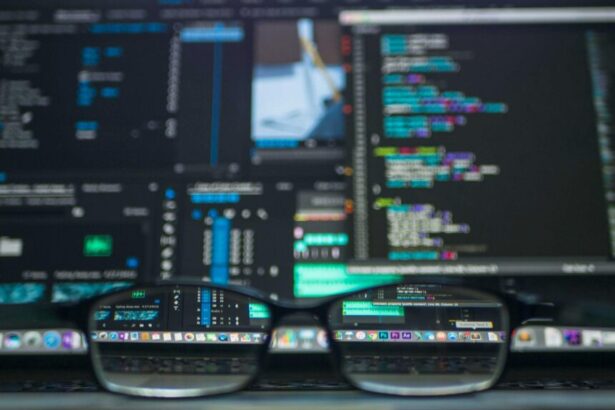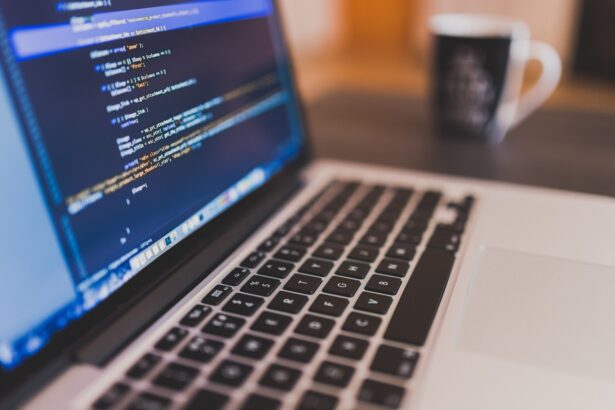Top Desktop Software Development Trends in 2025: Insights from an Experienced Technology Consultant
In the ever-evolving world of software development, desktop applications remain a cornerstone for productivity, creativity, and enterprise solutions. As a technology consultant with more than 15 years of experience guiding Fortune 500 companies through digital transformations, I’ve witnessed the shift from monolithic desktop tools to agile, integrated ecosystems. In 2025, desktop software development trends in 2025 will emphasize performance, security, and seamless user experiences amid rising demands for hybrid work environments.
- Trend 1: AI and Machine Learning Integration in Desktop Apps
- Trend 2: Cross-Platform Development Frameworks
- Trend 3: Enhanced Security with Zero-Trust Architectures
- Trend 4: Cloud-Hybrid Desktop Applications
- Trend 5: Sustainable and Performance-Optimized Development
- Checklist for Adopting 2025 Desktop Development Trends
- FAQs on Desktop Software Development Trends in 2025
- 1. What is the biggest challenge in adopting AI for desktop apps?
- 2. How do cross-platform frameworks impact development costs?
- 3. Why is zero-trust essential for 2025 desktop security?
- 4. Can desktop apps fully replace web apps in hybrid models?
- 5. How can developers measure sustainability in their apps?
- Related Article
According to Gartner, by 2025, 70% of new enterprise applications will incorporate AI-driven features, up from 45% in 2023. Meanwhile, Statista reports that the global desktop software market will reach $150 billion, driven by cross-platform compatibility and cloud synergies. This article delves into the top trends, offering step-up strategies, real examples, a checklist for implementation, and FAQs to empower your development roadmap.
Trend 1: AI and Machine Learning Integration in Desktop Apps
Artificial intelligence is no longer a buzzword—it’s a necessity for desktop software. In 2025, AI integration in desktop software development will enable predictive analytics, automation, and personalized interfaces, enhancing user efficiency.
Real example: Microsoft’s Visual Studio Code leverages AI through GitHub Copilot, which suggests code snippets in real-time, boosting developer productivity by 55%, per a 2024 GitHub survey. For businesses, Adobe Photoshop’s AI-powered Sensei tool automates image editing, saving users hours on complex tasks.
Step-up Strategies:
- Assess Needs: Identify repetitive tasks in your app, like data entry, and map them to AI models.
- Choose Frameworks: Integrate open-source tools like TensorFlow.js for lightweight AI on desktops. For deeper insights, explore the best AI frameworks for developers in 2025.
- Test Iteratively: Start with prototypes to ensure AI doesn’t compromise desktop performance, aiming for under 10% CPU overhead.
- Scale Ethically: Implement bias detection to comply with emerging EU AI regulations.
Data backing: IDC predicts AI-embedded desktop apps will grow 40% YoY, reducing operational costs by 25% for enterprises.
Trend 2: Cross-Platform Development Frameworks
With users demanding apps that work across Windows, macOS, and Linux, cross-platform desktop software development trends 2025 will dominate. Frameworks like Electron and Flutter allow single-codebase deployment, cutting development time by up to 60%.
Real example: Slack’s desktop client, built on Electron, delivers consistent experiences across platforms, serving 12 million daily users. Similarly, Spotify’s desktop app uses Chromium-based tech for seamless media playback.
Step-up Strategies:
- Evaluate Tools: Compare Electron for web-like UIs versus Flutter for native performance.
- Optimize for Hardware: Use platform-specific APIs to handle desktop-unique features like file system access.
- Monitor Performance: Profile apps to keep bundle sizes under 100MB, avoiding bloat common in cross-platform pitfalls.
- Integrate CI/CD: Automate builds for multi-OS testing, aligning with broader automation trends in software development for 2025.
Supporting data: A 2024 JetBrains survey shows 68% of developers prefer cross-platform tools, with adoption rising 25% annually.
Trend 3: Enhanced Security with Zero-Trust Architectures
Cyber threats are escalating, making security trends in desktop software development 2025 critical. Zero-trust models, assuming no inherent trust, will embed continuous verification in desktop apps.
Real example: Zoom’s desktop client post-2020 implemented end-to-end encryption and zero-trust access, reducing breach risks by 80%, as reported in their 2024 security audit. Enterprise tools like Autodesk’s AutoCAD now use biometric logins for sensitive designs.
Step-up Strategies:
- Audit Vulnerabilities: Conduct penetration testing quarterly, focusing on supply chain risks.
- Implement MFA: Layer multi-factor authentication with hardware tokens for desktop access.
- Leverage Sandboxing: Isolate app components to prevent lateral attacks, inspired by macOS’s Gatekeeper.
- Update Compliance: Align with NIST frameworks to meet 2025 GDPR updates.
Gartner forecasts that by 2025, 60% of enterprises will adopt zero-trust for desktop endpoints, mitigating 50% of ransomware incidents.
Trend 4: Cloud-Hybrid Desktop Applications
Desktop software is evolving into hybrid models, blending local processing with cloud resources. Cloud integration in desktop app development 2025 enables offline capabilities with real-time syncing.
Real example: Dropbox’s desktop sync client combines local caching with cloud storage, handling 700 million users. Notion’s desktop app fetches data from the cloud while supporting offline editing.
Step-up Strategies:
- Design for Offline-First: Use IndexedDB for local storage, syncing via APIs when online.
- Secure Data Flows: Encrypt transmissions with TLS 1.3 and monitor for anomalies.
- Scale Resources: Integrate with services like AWS Lambda for burst computing. For more on this, see top cloud software development trends in 2025.
- Handle Conflicts: Implement merge algorithms for multi-device syncing.
Statista data indicates hybrid apps will comprise 55% of desktop deployments by 2025, improving accessibility by 40%.
Trend 5: Sustainable and Performance-Optimized Development
Sustainability is gaining traction, with sustainable desktop software development practices 2025 focusing on energy-efficient code and hardware optimization to reduce carbon footprints.
Real example: Google’s Chrome browser has optimized rendering engines to cut power usage by 30% on desktops, per their 2024 Green Software report. Autodesk promotes eco-friendly simulations in desktop CAD tools.
Step-up Strategies:
- Profile Energy Use: Tools like Intel Power Gadget to measure app consumption.
- Optimize Algorithms: Shift to efficient data structures, reducing CPU cycles by 20%.
- Promote Updates: Encourage lightweight patches over full reinstalls.
- Certify Green: Aim for ISO 14001 compliance in development pipelines.
According to the Green Software Foundation, sustainable practices could slash IT emissions by 45% by 2030, with desktop apps contributing significantly.
Checklist for Adopting 2025 Desktop Development Trends
To implement these trends effectively, use this actionable checklist:
- Conduct a trend audit: Evaluate current apps against AI, cross-platform, security, hybrid, and sustainability criteria. [ ] Completed
- Select tools: Choose 2-3 frameworks (e.g., Electron, Flutter) and integrate one AI library. [ ] In Progress
- Prototype and test: Build MVPs for high-impact features, measuring performance metrics. [ ] Tested
- Secure and optimize: Implement zero-trust and energy profiling; run security scans. [ ] Verified
- Deploy and monitor: Roll out via CI/CD, track user feedback and KPIs quarterly. [ ] Live
- Train teams: Upskill on new trends through workshops or certifications. [ ] Scheduled
FAQs on Desktop Software Development Trends in 2025
1. What is the biggest challenge in adopting AI for desktop apps?
The primary hurdle is balancing AI’s computational demands with desktop hardware limits. Start with edge AI models to minimize latency.
2. How do cross-platform frameworks impact development costs?
They reduce costs by 50-60% through code reuse, but require upfront investment in learning curves and testing.
3. Why is zero-trust essential for 2025 desktop security?
With remote work persisting, zero-trust prevents insider threats and breaches, aligning with 75% of predicted cyber incidents per Forrester.
4. Can desktop apps fully replace web apps in hybrid models?
No, but hybrids offer the best of both—local speed with cloud scalability. For API choices in such integrations, consider REST vs GraphQL.
5. How can developers measure sustainability in their apps?
Use metrics like carbon intensity (gCO2e per transaction) via tools from the Green Software Foundation, targeting under 0.5g per user session.
In conclusion, embracing these top desktop software development trends in 2025 positions your organization for innovation and resilience. As a consultant, I recommend starting with a pilot project to realize quick wins. For database synergies in these trends, explore top database management trends in 2025.






